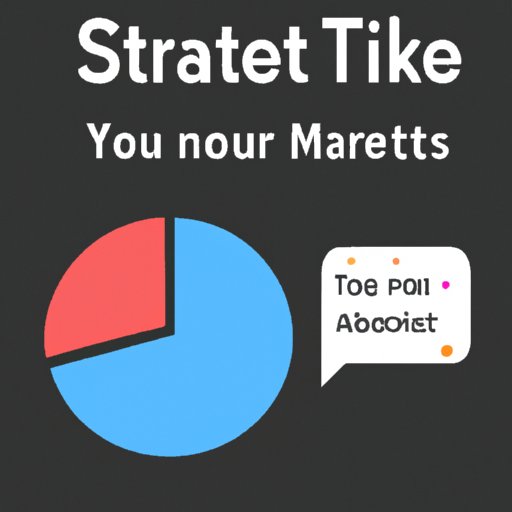Introduction
The way you start off a speech can make or break your entire presentation. A strong introduction will grab the attention of your audience, give them an idea of what to expect from your speech, and set the tone for the rest of your presentation. But crafting an effective speech introduction can be intimidating. In this article, we’ll explore eight tips for creating an engaging and memorable introduction.

Begin by Sharing a Personal Story or Anecdote
One of the best ways to draw in your audience and establish a connection is to begin your speech with a personal story or anecdote. Telling a story gives your audience a glimpse into your life and allows them to relate to you on a more personal level. Plus, stories can help to prove a point or illustrate a concept, making them a powerful tool for any speaker.
When crafting a story or anecdote, make sure it’s relevant to your topic and that it’s engaging enough to keep your audience’s attention. Avoid stories that are too long or complicated, as this can bore your audience and detract from your message. Instead, focus on telling a story that illustrates a point or drives home a key message.
Introduce Yourself and Your Topic
After you’ve shared a story or anecdote, it’s time to introduce yourself and your topic. This is your chance to explain who you are and why you’re speaking. You should also provide a brief overview of your topic and explain why it’s important to your audience.
To make your introduction memorable, try to capture your audience’s attention with an interesting fact or statistic about your topic. This will show your audience that you’re knowledgeable about the subject and that you’re passionate about it. Additionally, you can make your introduction relevant to your audience by tying it back to their own experiences or interests.
Explain the Purpose of Your Speech
Once you’ve introduced yourself and your topic, it’s time to explain the purpose of your speech. Explain why you’re giving the speech and what you hope to accomplish. Establishing your credibility and connecting with your audience are both essential components of a successful speech.
You can also use this portion of your speech to highlight the benefits of the topic you’re discussing. Show your audience how the information you’re presenting can help them and why they should listen. By emphasizing the relevance of your topic and its potential impact on your audience, you can ensure that they remain engaged throughout your presentation.
Outline the Main Points of Your Speech
Now that you’ve established your purpose and connected with your audience, it’s time to outline the main points of your speech. This gives your audience a roadmap for where you’re going and helps them stay focused and engaged. When organizing your speech, make sure each point builds on the last and that you provide evidence to support each argument.
To keep your audience interested, vary the pace of your speech and make sure to include plenty of visuals. You can also use humor to lighten the mood and keep your audience engaged. Just make sure the jokes are appropriate for the setting and relevant to the topic.

Ask an Interesting Question to Engage the Audience
Asking an interesting question can be a great way to engage your audience and get them thinking. Questions can be used to spark discussion, prompt further exploration of a topic, or even just to break up the monotony of a speech. However, not all questions are created equal. To be effective, your questions should be thought-provoking and relevant to your topic.
When crafting questions, avoid yes/no questions as these tend to limit the discussion. Instead, opt for open-ended questions that allow for a variety of responses. Additionally, make sure your questions are phrased in a way that encourages your audience to think critically and draw their own conclusions.
Provide a Memorable Quote
Including a memorable quote in your speech can be a great way to drive home a point or emphasize a key message. Quotes can be used to add credibility to your argument, motivate your audience, or simply add some levity to your presentation. When selecting quotes, make sure they’re relevant to your topic and that they come from a credible source.
Quotes should be kept brief, as long quotes can easily become tedious. Additionally, make sure to explain the context of the quote and the significance it has to your topic. Finally, if possible, try to find an unexpected or unique quote that will surprise your audience and leave a lasting impression.

Share an Inspiring Statistic or Fact
Including an inspiring statistic or fact can be a great way to engage your audience and demonstrate your knowledge of the subject. Statistics and facts can be used to back up your arguments, provide evidence for your claims, or just to add some interest to your presentation. When selecting statistics or facts, make sure they’re relevant to your topic and that they come from a reliable source.
To make your statistics and facts memorable, try to find ones that are surprising or unexpected. Additionally, provide context for the statistic or fact and explain how it ties into your topic. This will help to ensure that your audience understands the significance of the number and can draw their own conclusions.
Conclusion
Starting off a speech can be intimidating, but with the right preparation and strategies, you can create an effective and engaging introduction. Begin by sharing a personal story or anecdote to draw in your audience and establish a connection. Then introduce yourself and your topic, explain the purpose of your speech, outline the main points, ask an interesting question, provide a memorable quote, and share an inspiring statistic or fact. With these eight tips, you’ll be able to craft an effective and memorable introduction for any speech.
(Note: Is this article not meeting your expectations? Do you have knowledge or insights to share? Unlock new opportunities and expand your reach by joining our authors team. Click Registration to join us and share your expertise with our readers.)
